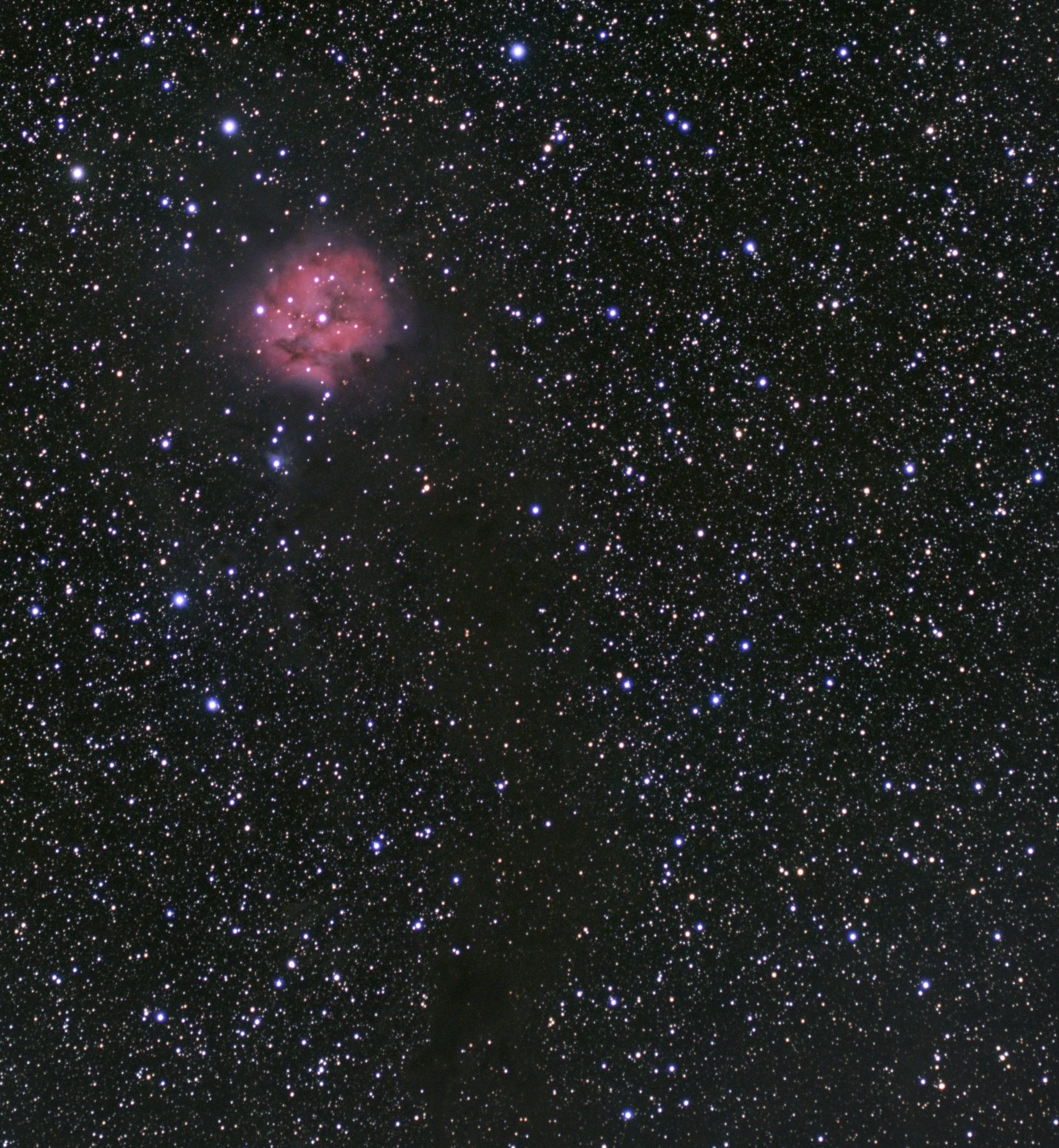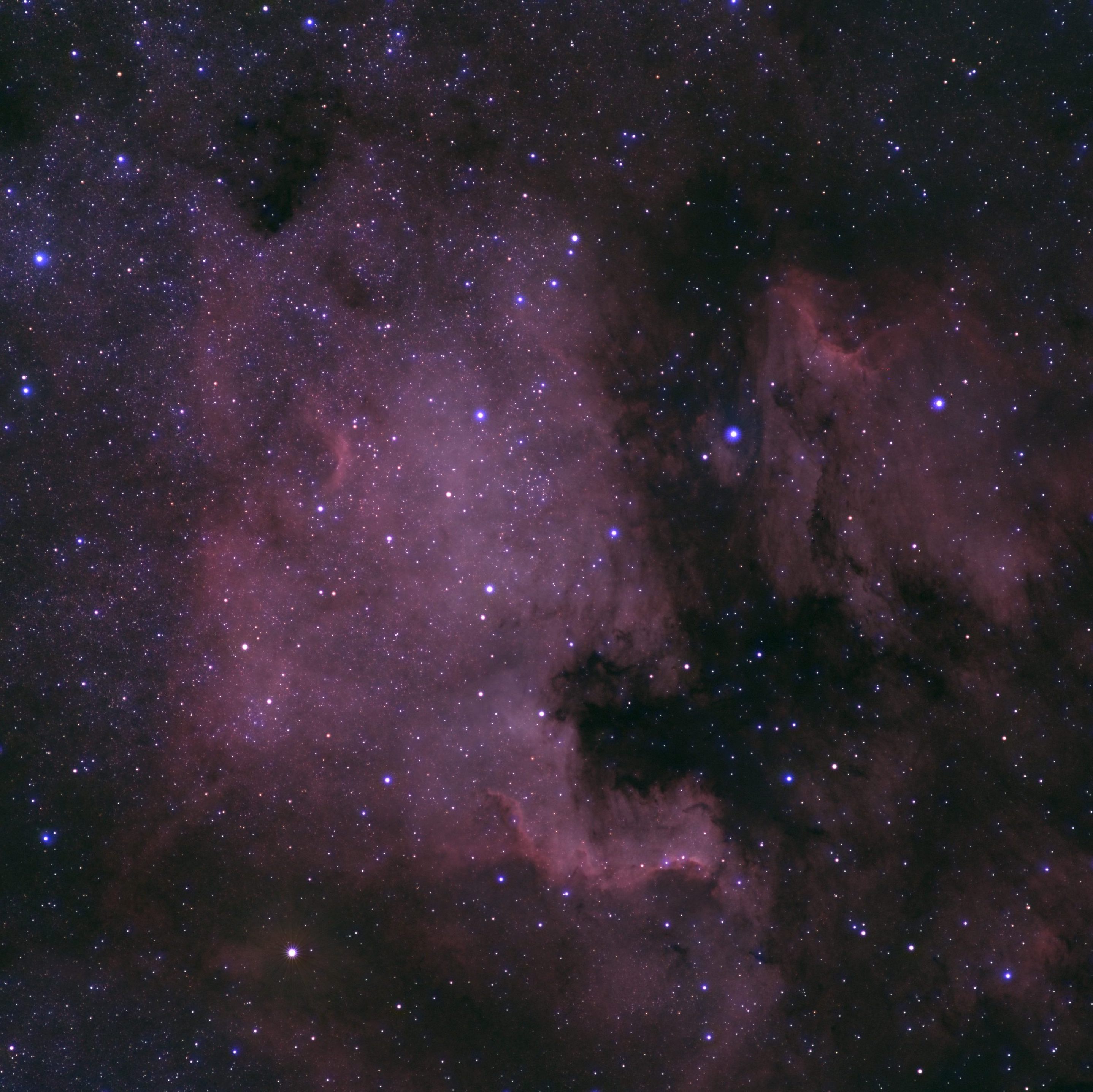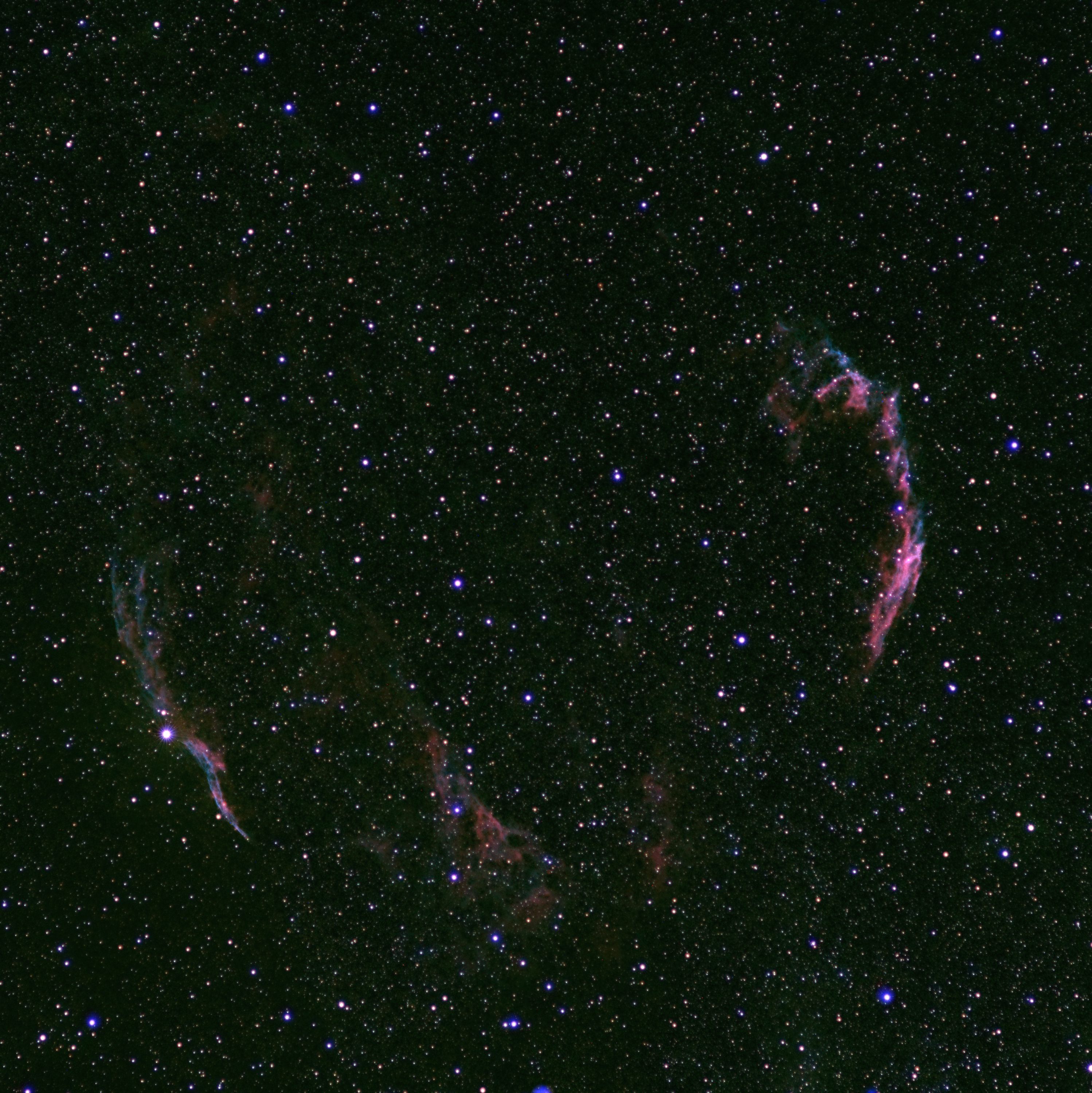IC 5146
2024, Nov 1

IC 5146: Cocoon Nebula in Cygnus
Borg 90FL@F4, ASI533MC, 48x300sec
UV/IR Filter
Mount: Astro-Physics 600 with TeenAstro
PixInsight, Starnet2
Compare with earlier version
North America Nebula
2024, Aug 31

North America Nebula and Pelican in the constellation Cygnus
Nikkor 180mm@F4, ASI533MC, 42x300sec
UV/IR Filter
Mount: Astro-Physics 600 with TeenAstro
PixInsight, Starnet2
Capture date: 29 Aug 2024
Cygnus Loop
2024, Jul 30

Cygnus Loop: Supernova remnant
Nikkor 180mm@F4, ASI533MC, 44x300sec
UV/IR Filter
Mount: Astro-Physics 600 with TeenAstro
PixInsight, Starnet2
Capture date: 29 Jul 2024
Sadr Region
2024, Jul 29

Sadr Region: H II region in the constellation Cygnus
Nikkor 180mm@F4, ASI533MC, 42x300sec
UV/IR Filter
Mount: Astro-Physics 600 with TeenAstro
PixInsight, Starnet2
Capture date: 27/28 Jul 2024
Archive
- IC 5146
- North America Nebula
- Cygnus Loop
- Sadr Region
- NGC 2244
- Takahashi NJP (Integrated TeenAstro)
- Takahashi NJP
- M31
- Lunar Eclipse - 16 may 2022
- Leo Triplet
- Bode's Galaxies
- Markarian's Chain
- M45
- NGC 7822
- Cold morning
- Heart Nebula
- NGC 6992 - Eastern Veil Nebula
- M33
- M16
- NGC 7635
- Dew Heater Controller
- IC 5146
- Reinforced pier for Telescope
- Summer Milky Way
- Box for TeenAstro mount controller
- NGC4565
- Morning Planets
- Wooden pier for Telescope
- NGC 2244 - Rosette Nebula
- Moonlight over Obiou
- Astro-Physics AP600 mount